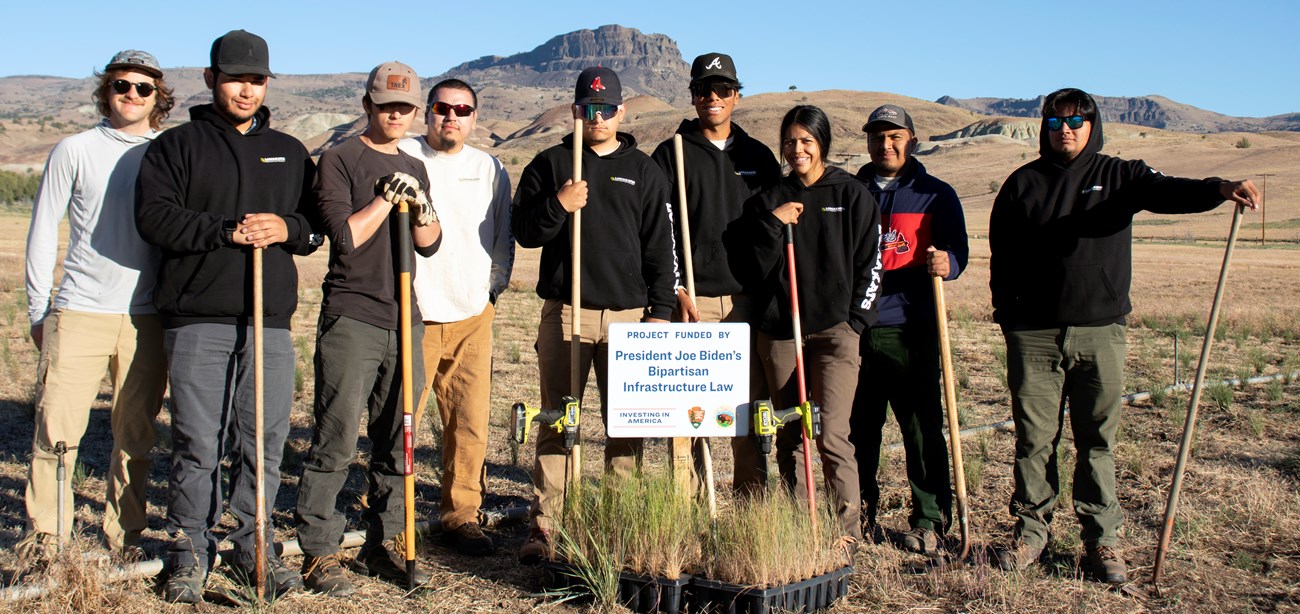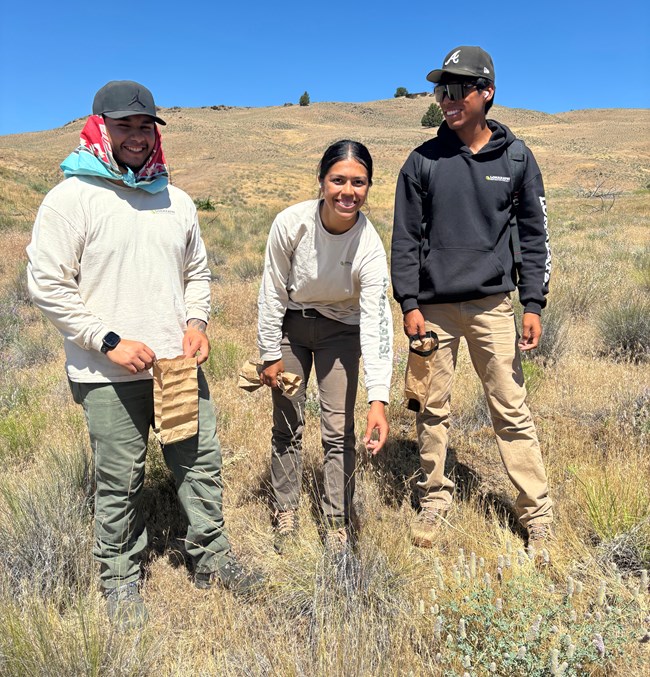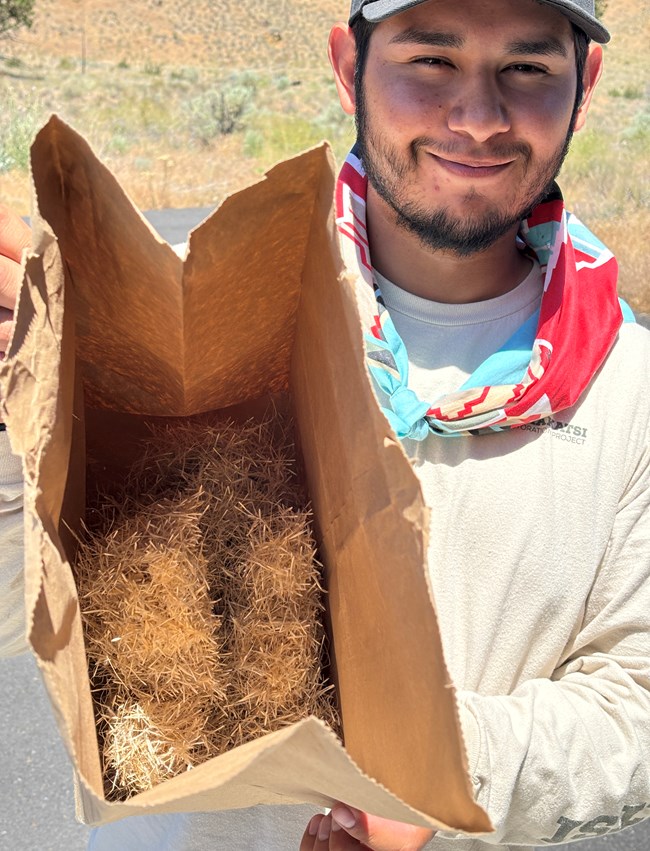Last updated: December 5, 2024
Article
Sagebrush Steppe plant materials to help wildfire recovery across Columbia Plateau, Snake River Plain, and Klamath Basin

NPS/T RODHOUSE
The sagebrush biome is the largest terrestrial biome in the Continental United State and 1.3 million acres of intact sagebrush steppe are being lost each year to wildfire and conversion to invasive nonnative annual grassland. Within the biome, the sagebrush ecosystems of the Interior Northwest are uniquely threatened by this fire-annual grass positive-feedback cycle, particularly in the Snake River Plain where these impacts were first described. Despite these threats, 30 million acres of intact sagebrush remain home to many important wildlife species including greater sage grouse and migrating deer, elk, and pronghorn, and provide important ecosystem services including carbon storage. The significance of these fire-related threats to sagebrush ecosystems has been studied and documented by multiple Department of the Interior bureaus, noted in the Sagebrush Conservation Strategy and Sagebrush Conservation Design.

NPS/T RODHOUSE
In 2024, Bipartisan Infrastructure Law (BIL), Burned Area Rehabilitation (BAR) funds provided funding to support a cooperative effort among Bureau of Land Management, U.S. Fish and Wildlife Service, and National Park Service staff to collect and produce native sagebrush steppe seeds and plants so that the plant materials necessary to restore this important ecosystem are readily available for post-fire rehabilitation and recovery. Multiple Seeds of Success collection crews have already been in the field supporting the three bureaus across the thee-state region.

NPS/T RODHOUSE
Native grass seeds collected from Lava Beds National Monument in CA and John Day Fossil Beds National Monument in OR were planted for seed increase as part of an 80-acre effort to restore an old field on Bureau of Land Management lands near Prineville, OR, and near John Day Fossil Beds National Monument and the Confederated Tribes of Warm Springs Pine Creek Conservation Area.
The goal of this specific portion of the multi-bureau project is to turn this site into a native plant production field to support the local area. Youth participants from the Burns Paiute Tribe collaborated with the Lomakatsi Restoration Project and Oregon Natural Desert Association Tribal Stewards Program, Oregon State University-Cascades East Cascades Native Plant Hub, and staff from John Day Fossil Beds National Monument to collect the seeds. The timing was ideal as multiple fires burning in eastern Oregon during fire year 2024, and the existential threat imposed by climate change including more frequent and severe wildfires, could have significant impacts to this ecosystem and the diverse ecological functions and human values that are essential to preserve for present and future generations.
Tags
- john day fossil beds national monument
- burned area rehabilitation
- bipartisan infrastructure law
- native seed collection
- post-fire
- tribal ecological knowledge
- interagency collaboration
- bureau of land management
- u.s. fish and wildlife service
- tribal nations
- wildland fire
- success story
- workforce
- success stories
- 2024
